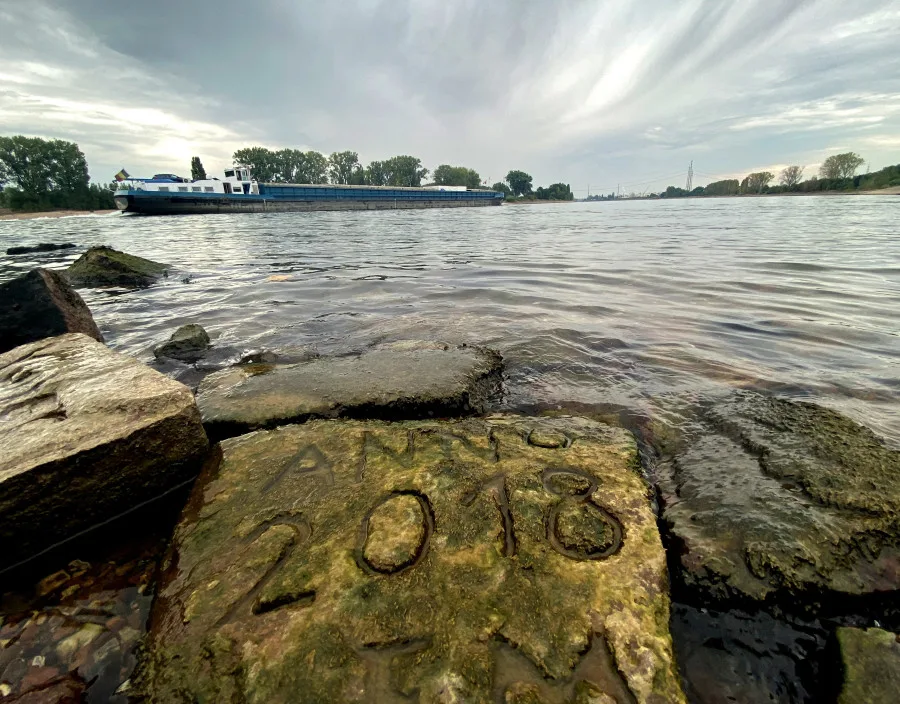
Europe's drought exposes long-submerged treasures - and unwanted hazards
(Reuters) - Weeks of baking drought across Europe have seen water levels in rivers and lakes fall to levels few can remember, exposing long-submerged treasures - and some unwanted hazards.
In Spain, suffering its worst drought in decades, archaeologists have been delighted by the emergence of a prehistoric stone circle dubbed the "Spanish Stonehenge" that is usually covered by the waters of a dam.

The dolmen of Guadalperal, also known as the Spanish Stonehenge, is seen due to the receding waters of the Valdecanas reservoir in the outskirts of El Gordo, Spain, August 3, 2022. (REUTERS/Susana Vera)
Officially known as the Dolmen of Guadalperal, the stone circle currently sits fully exposed in one corner of the Valdecanas reservoir, in the central province of Caceres, where authorities say the water level has dropped to 28% of capacity.
It was discovered by German archaeologist Hugo Obermaier in 1926, but the area was flooded in 1963 in a rural development project under Francisco Franco's dictatorship. Since then it has only become fully visible four times.
Memories of past droughts have also been rekindled in Germany by the reappearance of so-called "hunger stones" along the River Rhine. Many such stones have become visible along the banks of Germany's largest river in recent weeks.
Bearing dates and people's initials, their re-emergence is seen by some as a warning and reminder of the hardships people faced during former droughts. Dates visible on stones seen in Worms, south of Frankfurt, and Rheindorf, near Leverkusen, included 1947, 1959, 2003 and 2018.
Another of Europe's mighty rivers, the Danube, has fallen to one of its lowest levels in almost a century as a result of the drought, exposing the hulks of more than 20 German warships sunk during World War Two near Serbia's river port town of Prahovo.

Wreckage of a World War Two German warship is seen in the Danube in Prahovo, Serbia August 18, 2022. (REUTERS/Fedja Grulovic)
The vessels were among hundreds scuttled along the Danube by Nazi Germany's Black Sea fleet in 1944 as they retreated from advancing Soviet forces, and still hamper river traffic during low water levels.
Italy has declared a state of emergency for areas around the River Po, and in late July a previously submerged 450-kg (1,000-pound) World War Two bomb was discovered in the low-running waters of the country's longest river.
Around 3,000 people living near the northern village of Borgo Virgilio, close to the city of Mantua, were evacuated while military experts defused and carried out a controlled explosion of the U.S.-manufactured device earlier this month.

A World War Two bomb discovered in the dried-up river Po is detonated by 10th Engineer Regiment of Italian Army in Medole, Italy, August 7, 2022. (Italian Army - 10th Engineer Regiment/ Handout via REUTERS)
(Reporting by Reuters TV; Writing by Alex Richardson; Editing by Jonathan Oatis)
(Thumbnail photo: One of the 'hunger stones' is revealed by the low level of water in Worms, Germany, August 17, 2022. REUTERS/Tilman Blasshofer/File Photo)









